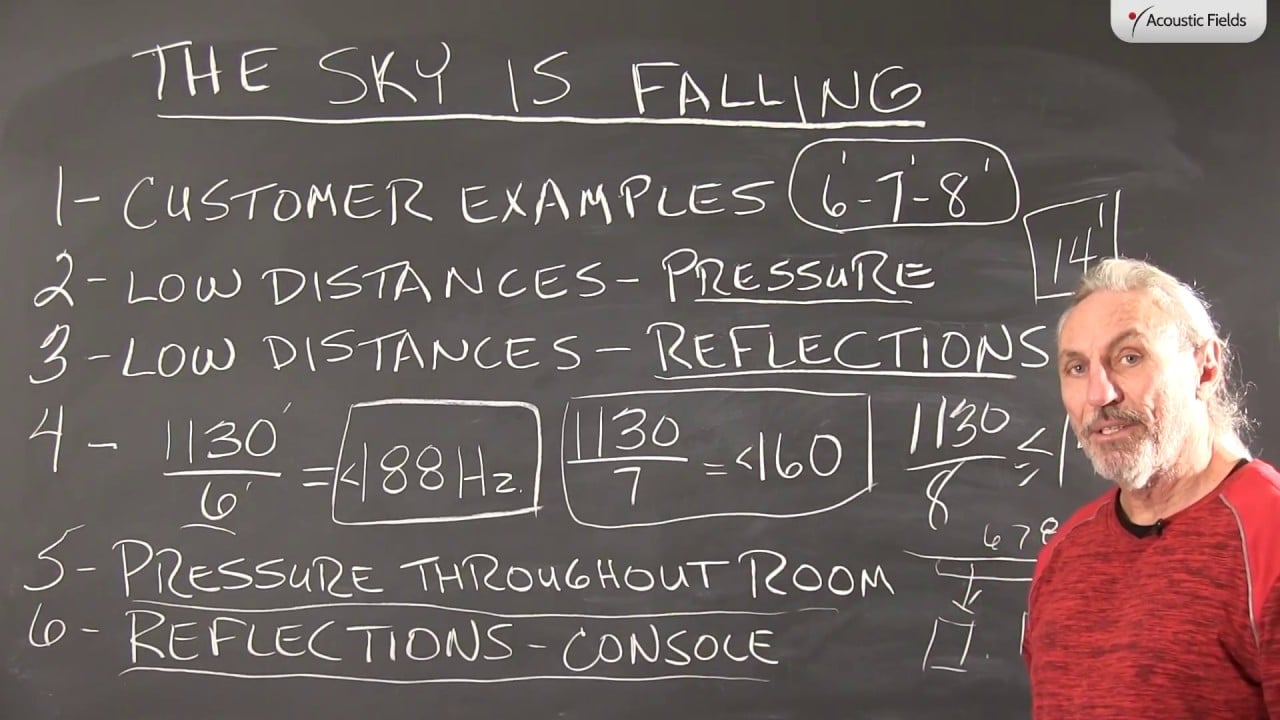Today we’re going to talk about how the sky is falling. Now the sky obviously is the ceilings in our room, I get probably 30, 40 phone calls a day and out of that 30 or 40, I would say half have very very low ceilings in their rooms. I see ceiling heights as low as 6 feet 7 feet and of course the standard 8 foot height that we have in North America so all of these low ceiling heights produce all kinds of issues mainly in the pressure and the reflection side of things.
So let’s talk about the pressure, we know that at 6 feet we divide that into the speed of sound, we’re going to have problems from the floor to the ceiling at all frequencies below 188 Hz. well we know from past videos that this is getting right into the base of the main vocal range so we’re going to have automatically with a low ceiling height, we’re going to have coloration in our vocals so we have to be very careful. It doesn’t change too much at seven feet, that’s less than 160. If we did eight feet what are we going to get? Let’s just call it 140.
So you can see that it doesn’t really change that much in terms of the issues that we’re going to have in the frequencies that we’re going to be up against so we have to be very very careful about the ceiling height. When we build new rooms we don’t do anything really less than a 14 foot ceiling height so you can see here that the problem 6, 7 just eight foot produce. And the thing about this ceiling height is that we have to have it all the way through the room unless your ceiling elevates towards the back with some do but in most cases it’s a relatively flat ceiling and these distances maintain themselves throughout the room.
So if the distances maintain themselves and their low we have reflections and then we have the pressure. The reflections are another issue that we have to deal with, you have a low ceiling height you’re going to have a lot of reflections at the listening and monitoring position. If you want to know the impact that has on your console take a blanket or a piece of foam and lay across your console and you’ll hear a drastic difference from the floor to the ceiling there. That’s why we treat above our monitors – that’s why we treat the ceiling area here to minimize those reflections but the closer that we are to the console if it’s six, seven and eight foot then we have a whole series of problems. We’re too close for diffusion and then we have to be very careful about the rates and levels of absorption that we use and then we have to deal with the pressure. So low ceiling heights, the sky is falling be very very careful with this. If you have the option of getting a room that’s even smaller in the width and the length but has a higher ceiling height that will probably work out better for you no matter what the usage.
—
This is an unedited transcript from our video series from Acoustic Fields. There will be some errors in grammar and sentence structure that occur during this translation process.
For complete understanding and comprehension, please view the video which is included in this text. For any additional information regarding this topic or others relating to room acoustics, please contact us directly at:
P: 520 – 392 – 9486







